It's an exasperating experience. You go to the nursery, pick out a flowering plant, shrub, or tree and bring it home only to have some critter damage or destroy it within the first week. Pests cause damage and waste time and money. The most common pests in the home landscape and garden are voles, moles, and gophers. By knowing what you're dealing with, it will be easier to eradicate the problem.
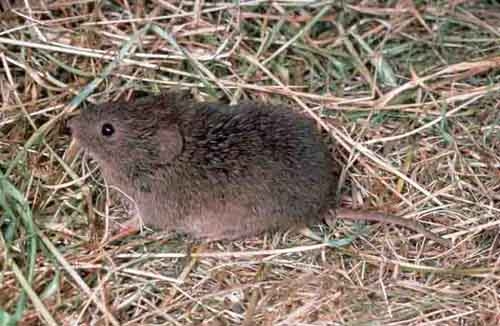
Voles are active both day and night and do not hibernate. They are shy creatures and build complex tunnels under dense ground cover such as lawns, grasses, and meadows. They live in colonies, spending most of their lives underground. Voles have an extremely short life cycle, living just three to six months, but females can become pregnant at three weeks old. The gestation period for female voles is sixteen to twenty-four days. A typical litter is five to eight baby voles. Young voles become self-sufficient after several days, at which time the mother vole moves on to find another partner to mate with. Because of their rapid reproductive rate, one mating vole pair can be responsible for producing one hundred voles (offspring, offspring of offspring, you get the picture) in a year. Even a single pair of voles can rapidly become a vole kingdom.
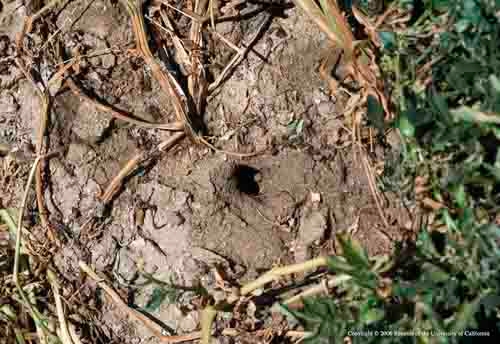
Modifying the habitat can be effective in controlling vole populations. Keeping the yard cleared of dense vegetation, any lawn mown, and shrub branches trimmed up off the ground can deter voles. Circling tree trunks with guard mesh is also helpful. Voles often thrive underneath weed cloth put down to prevent weeds from growing around ornamentals, and beneath mulch used to keep plant roots cool in the summer. Removing both is a deterrent tactic. It is also helpful to remove bird feeders, or control birdseed spillage. Keeping birdseed off the ground reduces food for voles.
Exclusion, repellants, and traps are more effective means of controlling voles. Hardware cloth (with one-quarter inch or smaller mesh) can be a useful barrier. The cloth can be fashioned into a fence at least twelve inches high and buried three inches in the ground to surround flower beds. Baskets can be made or purchased to protect trees and shrubs. Because coyote and fox urines are stressful to voles, application encourages them to move on. Coyote urine and fox urine can be purchased online. Repellants containing capsaicin (and active component of chili peppers) and thiram (a fungicide) have also proved to be effective on ornamental plants, but remember that repellants often wash away with rain and need to be reapplied. Although bait is not required, peanut butter mixed with oatmeal can be smeared on trap triggers when using mouse traps to eradicate voles. Two to three traps need to be set by each hole or runway. Baited traps need to be covered with a box or PVC pipe to deter other critters such as birds and squirrels. Make sure the box has a one-inch hole cut out in order to allow the vole to reach the trap.
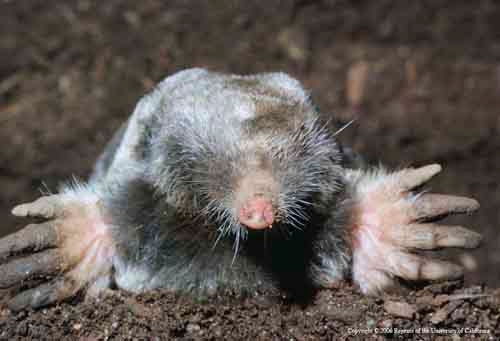
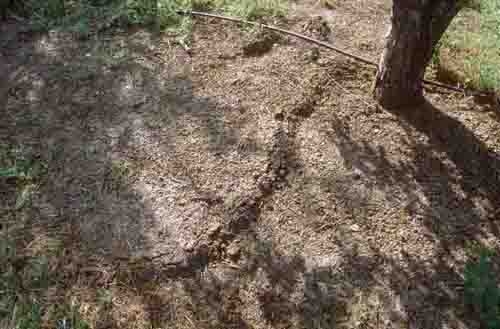
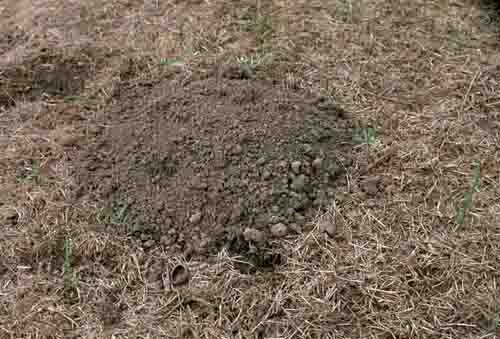
Gophers. Like voles, pocket gophers are rodents and herbivores. They prefer the fleshy underside of plants and roots. Called pocket gophers because of their furry cheek pouches that carry food and nesting materials, these critters are larger than either moles or voles, ranging from six to ten inches long. Gophers have long, yellow-orange front teeth, small eyes and ears, and short tails.
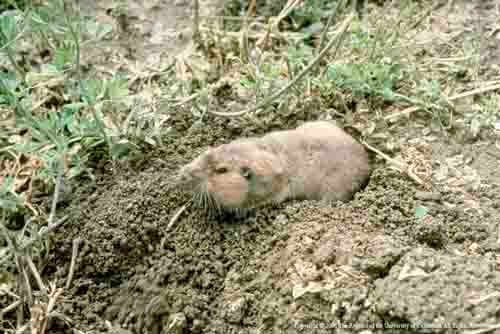
Gophers can wreak havoc on a row of plants by pulling entire plants down into their tunnels. They use their sense of smell to locate a source of food, preferring herbaceous plants, shrubs, and trees. Gophers will also gnaw on drip irrigation tubes and hoses.
Gophers reach sexual maturity at one year. Females produce up to three litters a year, with an average of five to six offspring per litter. Gophers live alone in their burrows except when females are caring for their young or during mating system. Since gophers can live up to three years, a gopher colony can become quite large over time.

Voles, moles, and gophers can wreak havoc in the garden but they can be managed using various methods to control, deter, or eradicate. Consider your natural environment, whether children and pets can be harmed by deterrents, the expense of the deterrent method, and your commitment to the program of eradication when choosing a plan to deal with these pests.
For further information, see Kim Pokomy, Moles, voles and gophers dig the garden | OSU Extension Service (oregonstate.edu).
For in-person help in dealing with these critters (including a demonstration on exactly how to set a gopher trap), attend our free workshop on gophers, moles, and voles October 9th, part of the Master Gardeners' Fall 2024 Workshop Series. For details, and to register, visit our website.
UC Master Gardeners of Butte County are part of the University of California Cooperative Extension (UCCE) system. To learn more about us and our upcoming events, and for help with gardening in our area visit our website. If you have a gardening question or problem, email the Hotline at mgbutte@ucanr.edu or leave a phone message on our Hotline at 530-552-5812. To speak to a Master Gardener about a gardening issue, or to drop by the MG office during Hotline hours, see the most current information on our Ask Us section of our website.